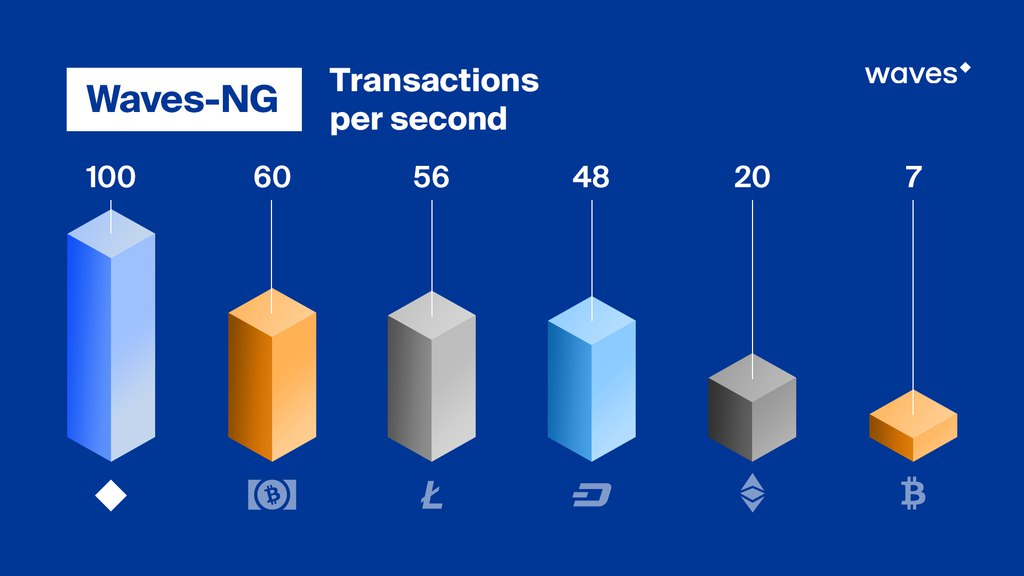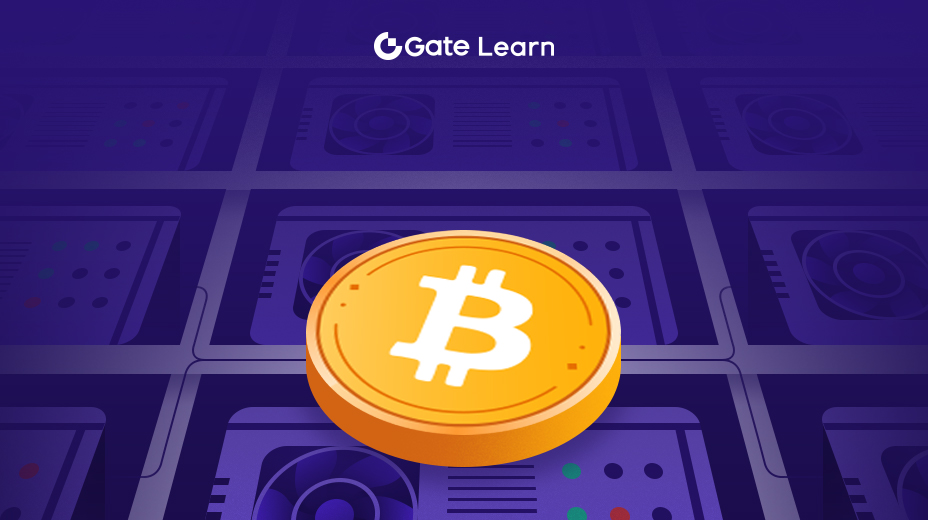La base technologique de Waves.tech
Cette section examinera le modèle économique du jeton WAVES, son rôle sur la plateforme et son application dans les échanges, les mises en jeu et les opérations de noeuds. De plus, le module couvrira la distribution des jetons, la dynamique du marché et les incitations financières pour les différentes parties prenantes de l'écosystème Waves.
Architecture de la blockchain

nœud complet
Le nœud complet est le cœur de la blockchain Waves, chargé de maintenir un historique complet de toutes les transactions. Ces nœuds sont cruciaux pour le réseau, en vérifiant les transactions et les blocs pour assurer l'intégrité et l'exactitude des données de la blockchain. Les nœuds complets utilisent le mécanisme de preuve d'enjeu locatif (LPoS) et peuvent accepter la location de jetons d'autres participants pour augmenter leurs chances d'être sélectionnés pour générer le prochain bloc. Les nœuds complets génèrent de nouveaux blocs par consensus, ce qui leur permet de recevoir des frais de transaction et des récompenses de bloc.
nœud léger
Les nœuds légers ne stockent pas l'historique complet de la blockchain, mais dépendent des nœuds complets pour la validation des transactions et d'autres interactions réseau. Cette conception permet aux nœuds légers de fonctionner de manière plus efficace et de consommer moins de ressources, car ils n'ont pas besoin de télécharger l'intégralité de la blockchain. Les principales fonctions des nœuds légers sont d'accélérer les transactions et d'améliorer la communication réseau, ce qui les rend adaptés aux utilisateurs qui ne souhaitent pas entretenir un grand livre complet mais qui souhaitent tout de même participer aux activités du réseau.
Architecture à deux niveaux
La blockchain Waves utilise une architecture à deux niveaux pour maintenir son réseau, comprenant des nœuds complets et des nœuds légers. Cette architecture vise à optimiser la scalabilité et les performances du réseau. Les nœuds complets sont responsables de la vérification des transactions et de la production de blocs, tandis que les nœuds légers fournissent un service rapide et efficace pour les transactions des utilisateurs. Cette répartition des rôles améliore non seulement les performances globales du réseau, mais renforce également la sécurité en décentralisant les responsabilités et les rôles dans l'écosystème.
Mécanisme de consensus
Le certificat de droits de location (LPoS) est un mécanisme de consensus unique de la plateforme Waves qui permet aux détenteurs de jetons de participer à la sécurité et au consensus du réseau sans avoir à exécuter un nœud complet, améliorant ainsi le modèle traditionnel de preuve d'enjeu (PoS). Dans LPoS, les détenteurs de jetons WAVES peuvent louer leurs jetons aux opérateurs de nœuds complets responsables de la génération de blocs. Ce mécanisme maintient la décentralisation de la validation des blocs tout en permettant à un plus grand nombre d'utilisateurs de participer à la sécurité du réseau, indépendamment de leurs compétences techniques ou de leur volonté d'exécuter un nœud complet.
Fonctionnalités et avantages
Dans LPoS, la capacité de générer des blocs est proportionnelle à la quantité de WAVES louée au nœud. En d'autres termes, plus un nœud contrôle de WAVES, que ce soit en les possédant directement ou en les louant, plus il a de chances de générer le prochain bloc. Les locataires conservent un contrôle total sur leurs jetons WAVES, car ces jetons restent stockés dans leur portefeuille et ne sont pas transférés aux opérateurs de nœuds. Ce dispositif réduit les obstacles à la participation, garantissant que même les détenteurs de petites quantités de WAVES peuvent contribuer à la sécurité du réseau et en tirer des bénéfices.
Les opérateurs de nœuds peuvent attirer plus de locataires en partageant une partie des récompenses en bloc et des frais de transaction, de manière à ce que les deux parties soutiennent activement le réseau. Ce mécanisme de répartition des récompenses renforce la sécurité du réseau en encourageant la participation de plus de personnes et en répartissant plus équitablement le pouvoir dans le réseau, ce qui réduit les risques de centralisation.
Sécurité en ligne et participation des utilisateurs
Le mécanisme LPoS rend non seulement plus facile la participation au consensus du réseau, mais renforce également la sécurité. En permettant aux utilisateurs de louer leurs parts, le LPoS encourage plus de personnes à participer au processus de consensus du réseau, ce qui est crucial pour maintenir une blockchain forte et sécurisée. De plus, les WAVES loués sont verrouillés pendant la durée de la location (mais le locataire peut annuler à tout moment), ce qui garantit la stabilité de la mise en gage et du processus de consensus du réseau.
incitations économiques
LPoS offre des incitations économiques puissantes aux opérateurs de nœuds et aux locataires de jetons. Les opérateurs sont encouragés à maintenir des normes opérationnelles élevées et à être honnêtes, car leur capacité de génération de récompenses est directement liée à la quantité de WAVES qu'ils peuvent attirer et détenir. En revanche, les locataires sont motivés par le fait qu'ils peuvent obtenir des revenus passifs de leur détention sans avoir besoin d'investir massivement dans du matériel ou d'avoir des compétences techniques, ce qui permet aux petits détenteurs de recevoir facilement des récompenses.
protocole avancé
Protocole Waves NG

Waves NG est une innovation majeure dans la technologie de la blockchain, visant à améliorer considérablement les capacités de traitement des transactions et à réduire les délais, faisant ainsi de Waves l'un des réseaux blockchain les plus rapides. Ce protocole est inspiré de Bitcoin-NG et optimise la génération des blocs grâce à un système à deux niveaux composé de blocs clés et de micro-blocs. Les blocs clés sont générés régulièrement et donnent aux mineurs l'autorisation de créer des micro-blocs, qui sont plus petits et peuvent être générés plus fréquemment, accélérant ainsi la vitesse de confirmation des transactions.
Ce design permet à la blockchain Waves de traiter un volume de transactions plus élevé, avec une prévision de 100 transactions par seconde, ce qui est nettement supérieur aux systèmes de blockchain traditionnels. La haute efficacité de Waves NG améliore non seulement la scalabilité du système, mais également l'expérience utilisateur grâce à une vérification des transactions plus rapide.
Contrat intelligent
Waves prend également en charge le développement d'applications décentralisées (DApps) flexibles et sécurisées, en fournissant des fonctionnalités de contrat intelligent. Contrairement à d'autres plateformes blockchain, les contrats intelligents de Waves ne nécessitent pas de frais de gaz importants lors de leur exécution, mais plutôt un modèle de frais fixes, ce qui facilite le processus de développement et la prévision des coûts.
Waves utilise un langage de programmation appelé Ride pour écrire des contrats intelligents, ce langage se concentre sur la sécurité et la facilité d'utilisation. Ride n'est pas Turing-complet, ce qui réduit certaines erreurs et vulnérabilités courantes dans les langages Turing-complets. Cette conception garantit la prévisibilité des coûts de calcul, améliore la sécurité du réseau et maintient un débit élevé.
La plateforme prend en charge trois types de contrats intelligents :
- Script DApp:La fonctionnalité la plus flexible, capable d'exécuter pratiquement toutes les opérations possibles sur Waves.
- Compte intelligent :Il est possible de définir des conditions pour les autorisations de transaction, telles que l'exigence de signatures multiples.
- Actifs intelligents :Il est possible d'imposer des restrictions sur les transactions ou les transferts d'actifs, par exemple en autorisant uniquement les transactions à un prix spécifique ou en ne permettant les transferts que vers des comptes approuvés.
Waves NG et les contrats intelligents posent ensemble des bases solides pour la construction de solutions blockchain évolutives, efficaces et sécurisées, prenant en charge une variété d'applications allant des services financiers à la gestion de la chaîne d'approvisionnement.
Unité Zéro

Unit Zero introduces a complex operating structure built on top of the base Waves network, called Layer-0, and extends its capabilities to Layer-1 of Unit Zero. This architecture allows certain Waves nodes to directly participate in the Unit Zero network, enabling seamless integration and functionality expansion between the two layers. The operational mechanism is managed by chain contracts on the Waves network, which coordinate the consensus process of Unit Zero, including selecting block generators in Layer-1, where each block in Waves corresponds to an epoch in Unit Zero, with specific generators responsible for block generation in that epoch.
Le mécanisme de consensus utilisé est un système de preuve d'équité modifié (PoS) qui calcule le temps de latence de qualification de chaque générateur de blocs afin d'assurer une participation équitable et renforcer la sécurité du réseau. Après avoir produit un bloc, le générateur interagit avec le contrat de chaîne pour enregistrer les métadonnées du bloc dans la blockchain Waves, ce qui permet de résoudre les problèmes potentiels de division en maintenant une chaîne de consensus majoritaire.
Réseau étendu et économie de jetons
Le réseau Unit Zero exige de ses nœuds un engagement assez important, avec un minimum de 20 000 WAVES requis pour participer à la génération de blocs. L'économie des jetons du réseau a initialement tourné autour d'un jeton intermédiaire, le L2MP, qui a servi de solde de génération pour les nœuds au cours des deux premières années du réseau Unit Zero. Ce mécanisme de mise en jeu est géré via un contrat de mise en jeu sur Waves, permettant aux détenteurs de L2MP de déléguer des jetons pour représenter le solde de génération de leurs nœuds.
Les récompenses de production de blocs sont distribuées sous forme de jetons UNIT0, comprenant des frais de transaction en plus des récompenses d'époque fixes, formant ainsi une structure incitative pour encourager la participation active des utilisateurs au consensus et à la santé du réseau.
Architecture du noeud
L'architecture nodale de Unit Zero se compose principalement de deux parties :
- Client d'exécution :Responsable du traitement des transactions et de la maintenance de l'état de la blockchain. Il fonctionne dans un réseau pair à pair, gère la communication entre les nœuds et traite les demandes d'API JSON-RPC externes.
- Client de consensus:Responsable de faciliter l'ajout de blocs et d'atteindre un consensus dans le réseau. Dans l'Unité Zéro, ce client est en fait une version améliorée du nœud Waves, intégrant une extension du client de consensus pour combiner les puissantes capacités de réseau de Waves avec une nouvelle couche de blockchain.
Cette architecture technologique non seulement amélioré la scalabilité et l'efficacité de l'Unité Zero, mais a également assuré une sécurité forte et une décentralisation, exploitant pleinement les avantages de l'infrastructure Waves.





